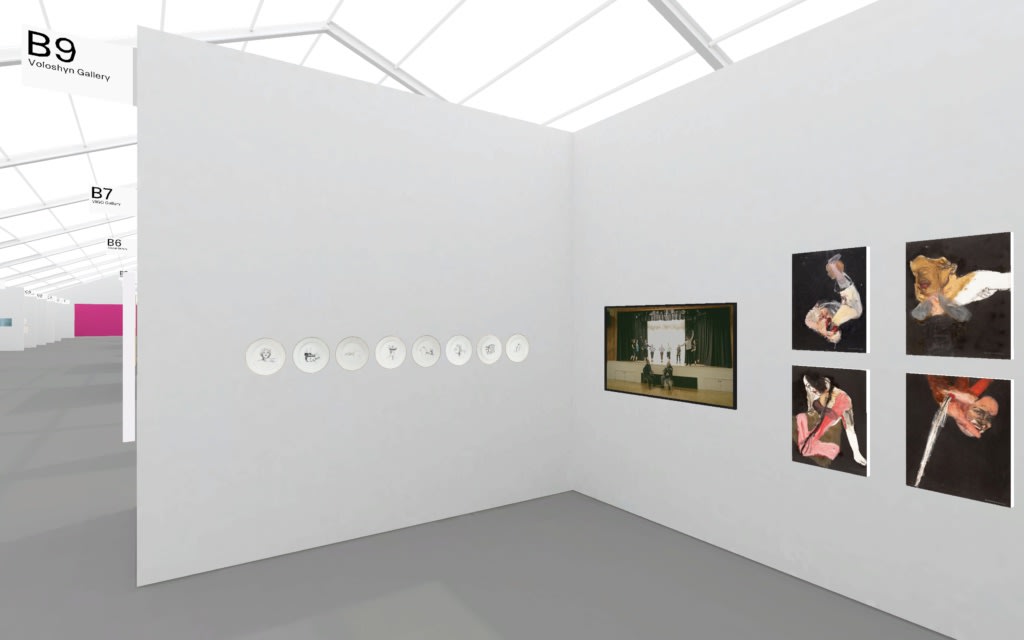UNTITLED ART ONLINE 2020
Overview
Founded in October 2016 by Max and Julia Voloshyn, Voloshyn Gallery specializes in contemporary art. Voloshyn Gallery showcases a broad range of media in contemporary art, hosting solo and group exhibitions.
Voloshyn Gallery is proud to present for the first time on Untitled, Art Online artists like Vlada Ralko, Nikita Kadan, Lesia Khomenko, Nikolay Karabinovych, Oleksiy Say and Artem Volokitin.
Presenting his work ‘’Procedure room’’ one of the leading personas of Ukrainian art - Nikita Kadan. These works are about police torture, a widespread practice in contemporary Ukraine. The work consists of a set of souvenir plates printed with drawings of police tortures and the text of the email dialogue between Yekaterina Mishchenko and Nikita Kadan.
Nikolay Karabinovych will showcase his video ‘’Ukrainians: The People Who Couldn't Go Home’’. The video depicts a Manchester-based Ukrainian ensemble, Орлик (Orlyk), playing a song by the post-punk band New Order. A process of exchange meant to show the randomness and absurdity of our lives—a reenactment of an already confusing anecdote. Filmed during the artist’s residency in SWAP, UK.
The series ‘’Signs’’ by Vlada Ralko are her significant ones up today. The works from the series deliberately did not contain any clear meaning, at least on the surface. In 2008, when the artist was working on them, it would forestall the question “What does that mean?”, suggesting instead of an explanation, the lack of content as vulnerability and challenge at the same time. Ralko wanted to turn the audience 180 degrees, to create a kind of vicious circle, where each issue is questionable due to the lack of response. This “something” has been sort of tearing or injuring the body from the inside and thus appeared on the surface.
Lesia Khomenko reimagining her series “Giants” specifically for Untitled, Art Online. ‘’Giants’’ is a project that Lesia has been developing since 2006. This is a series of large-format paintings in which average people – the “heroes” of today’s world – are represented from a “frog’s point of view.” Khomenko is also interested in how powerful the historical “break” in the culture of post-Soviet countries seemed, when all Western art abruptly burst onto this territory in the early 1990s all at once, without any reconsideration of its historical logic. Her transformation of the “grand style” is one attempt to return the historical dimension to culture.





